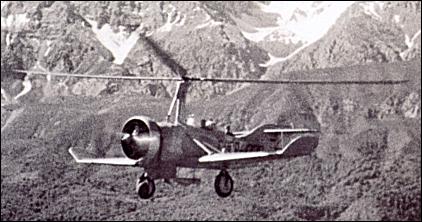This autogyro designed by Kamov was considerably more stream-lined than its predecessors. The rotor had three blades, the fuselage was completely covered by a light alloy skin and the landing gear was streamlined.
A later version, the A-7-3, which had two small fins below the stabilizer, was used during the last war for some observation missions.
P.Lambermont "Helicopters and Autogyros of the World", 1958
Warning: mysqli_connect(): php_network_getaddresses: getaddrinfo for mysql5.zone.ee failed: Name or service not known in /data03/virt15346/domeenid/www.aviastar.org/htdocs/helicopters_eng/kamov_a-7.php on line 58
Fatal error: Uncaught mysqli_sql_exception: php_network_getaddresses: getaddrinfo for mysql5.zone.ee failed: Name or service not known in /data03/virt15346/domeenid/www.aviastar.org/htdocs/helicopters_eng/kamov_a-7.php:58
Stack trace:
#0 /data03/virt15346/domeenid/www.aviastar.org/htdocs/helicopters_eng/kamov_a-7.php(58): mysqli_connect('mysql5.zone.ee', 'd14657sa18989', Object(SensitiveParameterValue))
#1 {main}
thrown in /data03/virt15346/domeenid/www.aviastar.org/htdocs/helicopters_eng/kamov_a-7.php on line 58





